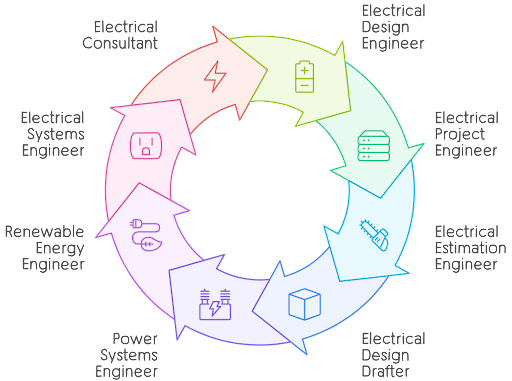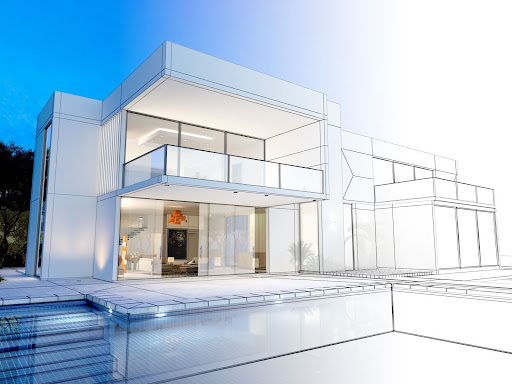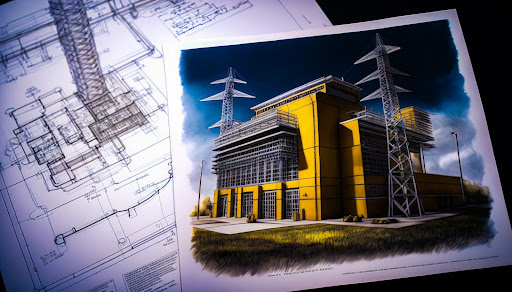- Home
- >
- Courses
- >
- Electrical
Certified Electrical Design Course in Chennai
Learn in English & தமிழ்
ACTMEP offers an advanced electrical design course composed of designing with new software. We teach designing, execution, project, and estimation as top priorities. It has set up a benchmark for electrical training in Chennai that meets the industrial standards in the market. This course will help a fresh graduate become an electrical design engineer in no time and an experienced professional upgrade his career.
Learn in English, हिंदी, ಕನ್ನಡ, తెలుగు, தமிழ்
Enrollment Deadline
13th July 2024
Batch Starts
15th July 2024
Format
Live Online Classes + Offline Classes
Certificates
Industry Recognized Certificate
Duration
2 Months with Paid Internship
Course
1 Year access to recorded videos
About ACTMEP Electrical Design Course in Chennai
With ACTMEP’s project-based Electrical Design Course in Chennai, you will improve your design skills and take charge of your future. Learn how to use industry-standard tools like AutoCAD, Dialux, and Revit, solve problems in the real world, and get expert work advice to improve your chances of getting a job. For easy learning, we offer a range of language choices in both English and தமிழ்.. Are you ready to improve your electricity design skills?
Top Companies Hiring Electrical Design Engineers







Discover the benefits of Electrical Design Course
Electrical Design is a stable field with infinite growth. With a certified Electrical Design course in Chennai, you will learn all the Electrical Design concepts, software’s, industrial trends, and more in a structured way. The expert mentoring and practical training will bring you significantly closer to your ideal profession.
ACTMEP will equip you with the required skill set and hands-on experience to compete for top professional positions with a potential to earn salaries starting from ₹3 to 5 Lakhs.
Course Eligibility
- Electrical professionals who want to upgrade their skills are seeking advancements to senior positions.
- Freshmen EEE (B. Tech / BE) (Diploma EEE)
Opportunities for Electrical Design Engineering professionals in India
Increase in electrical design engineer jobs in India, as per a report by Nasscom
next 5 years is 15%
The average starting salary of a fresh electrical design engineer graduate in India is
₹300k - ₹500k LPA
Glassdoor
Payscale
High Demand Across Domains
Construction
Energy
Technology
Manufacturing
Why Learn Electrical Design Course?
- 1 year access to course recordings
- Learn in English & हिंदी, ಕನ್ನಡ, తెలుగు, தமிழ்
- Mentor-led instant doubt clearing
- Personalized feedback on assignments
- Live Online Classes + Offline ( Classroom Courses)
- 100% Job placement support
- Work on real-life paid Project
- Designed for fresh Graduates & Working Professionals
Electrical - Target Job Role


Explore our Electrical Design Course Syllabus
Leading industry professionals created this program especially for you in order to help you develop your skills in electrical design, drafting, and project management, all of which can help you land a high-paying job.
Course Modules
- Basics of Electrical power system
- Over view of Generation Transmission and Distribution System
- Power transmission fundamentals
- Why electrical in MEP Design?
- Standards – NBC,IEC,IS,NEC,DEWA,ADEWA,NEMA.
- Introduction to architectural Layouts
- Different types of false ceiling
- Work plane
- Brief introduction to elevation view
- Introduction to lighting system
- Lamps and luminaries types
- Concepts of lighting design
- Selection of lux for lighting design
- Room index calculation
- Calculating COU for lighting design
- Manual calculation for interior lighting
- Manual calculation for exterior lighting
- Manual calculation for emergency lighting
- Practical example on lighting design
- Introduction to RELUX software
- Step by step Importing AutoCAD file to RELUX
- Creating scenes for interior lighting design
- Editing project scenes in RELUX software
- Selection of luminaries
- Calculating number of luminaries using RELUX software
- Exporting from RELUX to autocad 2D
- Exporting from RELUX to excel
- Practical example on RELUX interior lighting design
- Introduction to exterior lighting
- Selection of luminaire for exterior lighting
- Basics of street lighting design
- Introduction to DIALUX software
- Difference between RELUX and DIALUX
- First lighting system design
- Second lighting system design
- DIALUX bathroom design
- Emergency lighting design
- Interior lighting design using blue icon in DIALUX
- Practical example on DIALUX software
- Selection of luminaire for exterior lighting in DIALUX
- Basics of street light design
- Basics of playground lighting
- Playground lighting design
- To estimate the total connected load(w or kw)
- To calculate the total demand(w or kw)
- Diversity factor calculation
- Applying for approval to service provider(BESCOM,TNEB,BRPL & more)
- Thumb rule calculation
- Power flow from distribution to appliances
- Importance of circuits
- Circuit types
- Light circuit design
- Power circuit design
- Importance of phase distribution
- When to select single phase and three phase system
- Load distribution to each phase
- Balancing 3 phases
- Introduction to Circuit Breakers
- Properties and Types of Circuit Breakers
- Difference between circuit breakers and isolators
- Circuit breaker selection
- Power system design with ELCB
- Short circuit current calculation
- Introduction to panel boards
- Panel board wiring
- Selection of panel board
- Types of panel boards
- Panel board sizing
- Introduction to wires and cables
- Types of cables
- Difference between cables and wires
- Selection of cables
- De-rating current calculation
- Cable sizing
- Bus bar sizing
- Selection of cable insulation
- Voltage drop calculation(VD)
- Conduit types
- Conduit sizing
- Calculating with spacing factor
- Different types of cable tray
- Cable tray sizing
- Trench design
- Brief introduction to transformers
- Types of transformers
- Types of transformer connection
- Transformer sizing (kva)
- HT yard design
- Need for a DG
- Working of DG
- Synchronizing DG to Power System
- DG Sizing methods
- Calculating diesel requirement
- Diesel tank sizing
- Why power factor to be improved?
- Difference between reactive power and real power
- Need for reactive power
- Capacitor bank sizing
- Implementation of capacitor bank
- Need for earthing in power system
- Types of earthing
- Earthing pit designing
- Earthing system design
- Earthing cable sizing
- To calculate the total coverage area
- Materials used for lightning protection
- Lightning protection design
- Lightning arrestor calculation
- Termination of lightning protection
- Introduction to solar Energy
- Advantages and disadvantages of PV cells
- Can I install solar panels by myself?
- Off-grid solar system
- Determine power consumption demand load
- Sizing the PV modules
- Inverter sizing
- Battery sizing using DOD values
- Solar charger controller sizing
- Short circuit current calculation
- Voltage drop calculation
- Need for an UPS
- Synchronizing UPS with power system
- Inverter sizing
- Battery sizing
- ATS system
- MTS System
- Tap changers
Course Modules
- Introduction and area calculation
- Main walls and Partition walls
- Stair case
- Doors and Hinges
- Dimensions
- Elevation view and section views
- Plotting
- Introduction
- Legends creation – part 1
- Legends creation – part 2
- Legends creation – part 3
- Legends creation – exercise
- Light sockets
- Power sockets
- Ceiling fans
- Exhaust fans
- Air Conditioner points
- Drafting light circuit layouts
- Drafting power circuit layouts
- Light and power circuit routing
- Cable tray routing
- Conduits routing
- Supports for conduits and cable tray
- Panel creation
- Enclosures and name plates
- Inserting panel boars to project
- Creation of horizontal conductors
- Creation of vertical conductors
- Creating grids
- Down comers
- Earthing pit design
- Creating pipes
- Creating the arc offsets
- Filleting
- Trimming
- Join
- Scaling the project
- Plot method 1
- Plot method 2
- Exporting project to different formats
- Editing the title block
- Adding tables
- Adding legends
Projects you’ll work on

Designing A Residential Villa with Documentation and more

Designing A commercial or Industrial building with documentation and more
Software's you will Learn


Strengthen Your Resume with Industry-Oriented Projects
Become an Electrical Design Engineer within 2 months!
Electrical Design Course with placement support
With a growing number of companies expanding nationwide and seeking skilled professionals in various sectors to develop commercial and residential designs, the need for innovative design professionals is at an all-time high. Invest in the most sought-after competencies and position yourself for success in the field of electrical design engineering.
How does our 100% job placement assistance work?
- Attend our classroom course or live classes on electrical design.
- Work on all the assignments assigned
- Complete the projects assigned by the mentors.
- Receive interview opportunities with companies

Master Electrical Design: Choose Live Online or Offline Training
Total Program Fee
₹ 18000
Master the art of electrical design with our live online course. Learn from industry experts, work on real-world projects, and gain a certification that sets you apart. Enroll today and power up your career!
FAQ
Candidates must possess a degree or diploma in electrical engineering (EEE) as a prerequisite.
We are offline as well as online. But the classroom-based offline course is conducted in Chennai
The duration of the course will be between 45 and 60 days.
Yes, ACTMEP’s Electrical Design course includes a paid project to provide students with hands-on experience. These sessions may involve working on real-world design projects.
Electrical design courses can lead to employment opportunities in the construction, engineering consulting, manufacturing, and energy sectors, among others. Electrical consultant, electrical design engineer, and project engineer are popular careers.
Upon successful completion of this Electrical Design course, ACTMEP Class Experts will direct you to the course’s dedicated placement cell. Obtain guaranteed placement assistance with a remarkable portfolio of projects in pursuit of lucrative job offers.
The electrical design course will cost between 18,000 and 25,000 INR. The payment must be made in two separate installments. Upon enrollment, the student has to pay half of the fee; the remaining balance must be settled after 25 days.
